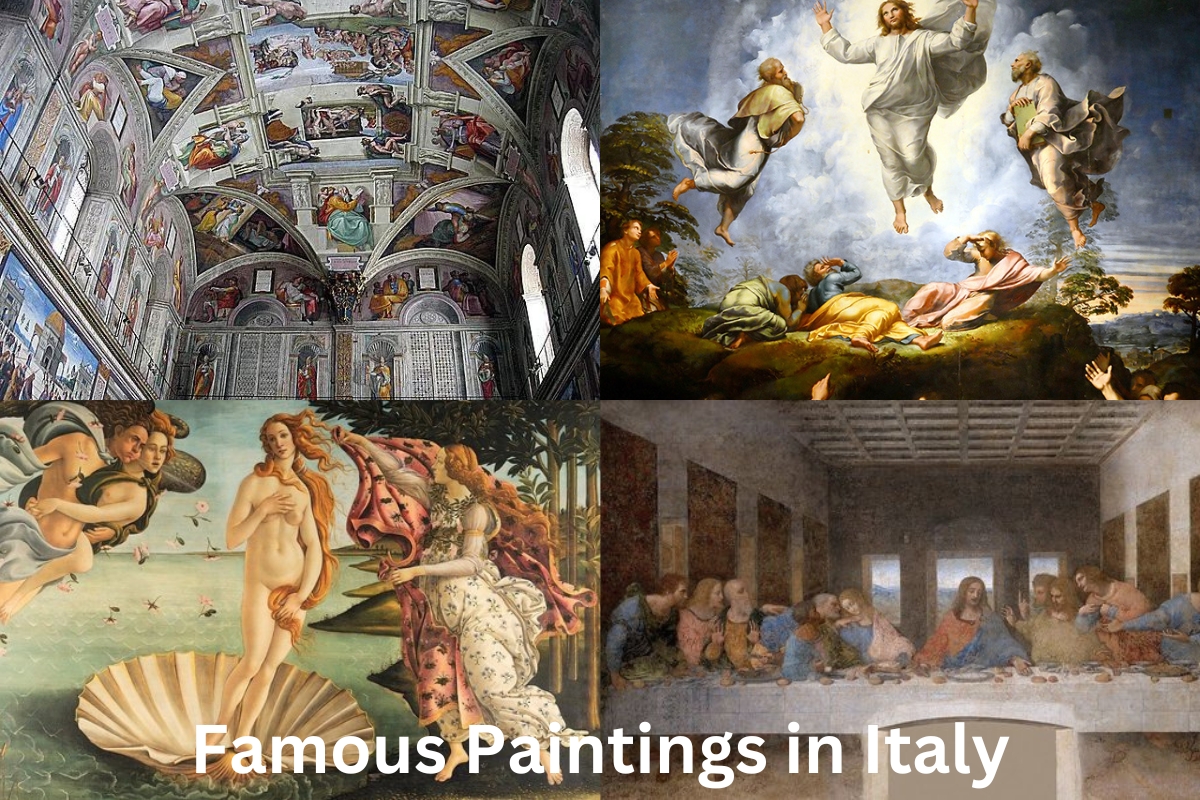Italy is home to some of the finest paintings that have ever been created. Given that it is the birth place of the Renaissance art movement there is very little wonder as to why.
They are not all based in Rome however, there are thousands of great masterpieces to be found all over Italy in each of it’s major cities inside hundreds of amazing museums, galleries and churches.
The following are some of the most famous paintings in Italy that are regularly on display.
Famous Paintings in Italy
1. The Last Supper – Leonardo da Vinci

The Last Supper, by Leonardo da Vinci, is a painting that represents the final meal that Jesus shared with his twelve apostles. This type of religious subject can be found in many well-known works of art from the Renaissance period.
This piece cannot be considered a standard fresco because Leonardo chose to paint it on canvas rather than a wall and used oil paints rather than the watercolors he normally used.
It is thought that Leonardo loved painting in oil because of the longer drying time of the medium, which gave him more time to mull over his compositions.
Due to the porous nature of stone walls, Leonardo ran into difficulties when he attempted to use oil paints to paint his masterpieces.
As a direct consequence of this, he covered the afflicted area with two layers of gesso, mastic, and pitch.
A number of different restorations have been done to the painting over the course of its long history.
The original varnish on the oil painting has flaked off, most likely as a result of damage that was caused inadvertently or accidentally.
Located in the city of Milan, in northern Italy, within the Santa Maria delle Grazie church and Dominican monastery.
2. The Birth of Venus – Sandro Botticelli
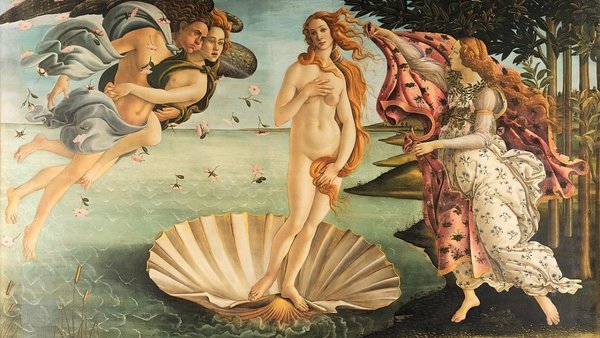
The Birth of Venus, a painting by Botticelli that is considered to be among the finest examples of Renaissance art, depicts the Roman goddess Venus being brought to shore on a massive shell.
The Primavera, another well-known work of art from the Renaissance that was created by Sandro Botticelli, also depicts a legendary scene.
The Medici family was a wealthy banking family in Florence, and they were the ones who commissioned these two works of art.
The Birth of Venus is a painting done in tempera on canvas, but the majority of the artist’s earlier works were probably painted on wood panels.
Because it does not warp when exposed to damp, canvas was a much better material to utilize than wood.
3. Sistine Chapel Ceiling – Michelangelo
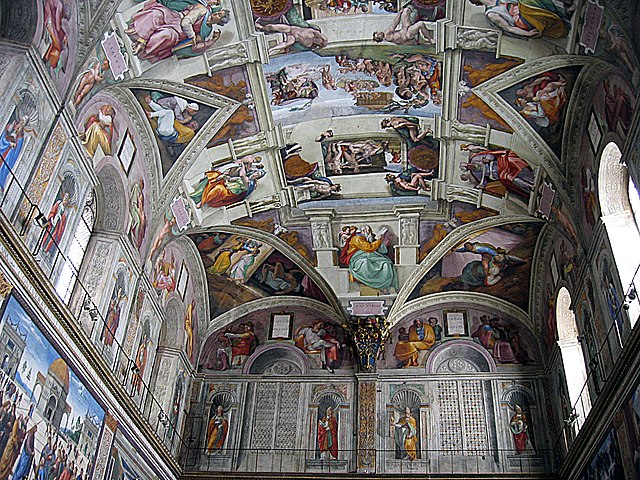
Even if the other paintings on the ceiling of the Sistine Chapel are more magnificent, The Creation of Adam, which is located in the center of the ceiling, is the one that receives the most attention.
Between the years 1508 and 1512, Michelangelo finished painting the ceiling of the Sistine Chapel, also known as the IVolta della Cappella Sistina. This masterwork illustrates the most lofty ideals that were prevalent during the Renaissance period.
Pope Julius II was the one who gave the commission for the artwork on the ceiling. Even up until the present day, papal conclaves and a variety of other significant events are held at the chapel.
The nine different scenarios that are shown on the ceiling are all derived from the book of Genesis, with Adam’s creation being the most well-known of the bunch.
Michelangelo was able to demonstrate his skill in creating a wide variety of poses for the human form using the intricate pattern, which has served as an extremely important pattern book of models for other artists ever since it was created. The complex pattern features various groups of people, both clothed and unclothed.
Michelangelo painted the mammoth work while he was lying on his back from scaffolding that had been placed beneath the ceiling. This allowed him to finish the job faster.
4. Venus with a Satyr and Two Cupids – Annibale Carracci
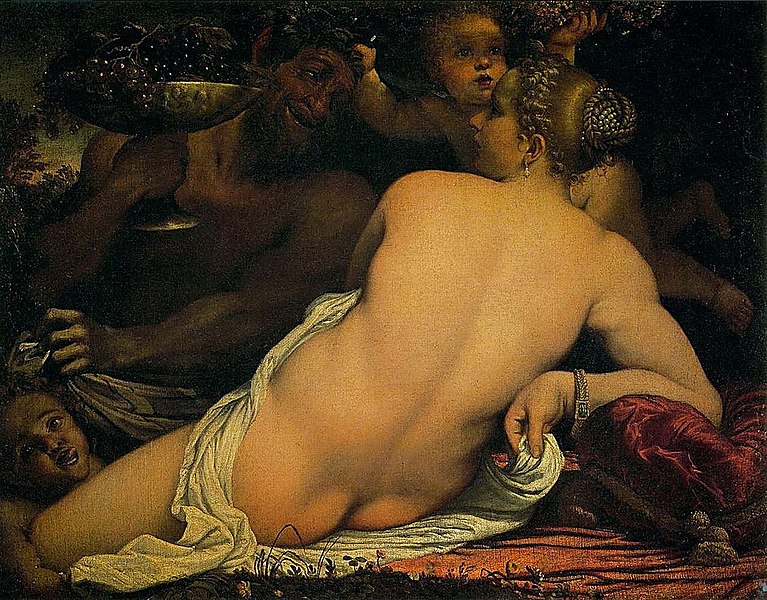
This oil on canvas painting by Annibale Carracci, titled Venus with a Satyr and Two Cupids or The Bacchante (La Baccante), was created between 1588 and 1590. It is currently housed in the Uffizi Gallery in Florence.
It is possible to date the work based on the significant Venetian influence found in it; the artist spent some time in the city during the end of the 1580s.
In 1620, a Bolognese gentleman named Camillo Bolognetti sold the piece to an ambassador working for Cosimo II de’ Medici, who was the Grand Duke of Tuscany at the time. This transaction is the first time the work is documented.
After that, it was transported to Florence, where it remained a part of the Medici collections.
It was exhibited in the Tribuna of the Uffizi, and it can be seen in the top left corner of Johann Zoffany’s painting of the same name, directly above Raphael’s Madonna della Seggiola and next to Guido Reni’s Charity.
Because of the sensual charge it carried, it was covered up with another canvas throughout the 18th century, and it wasn’t removed until the early 19th century.
5. El Beso(The Kiss) – Francesco Hayez
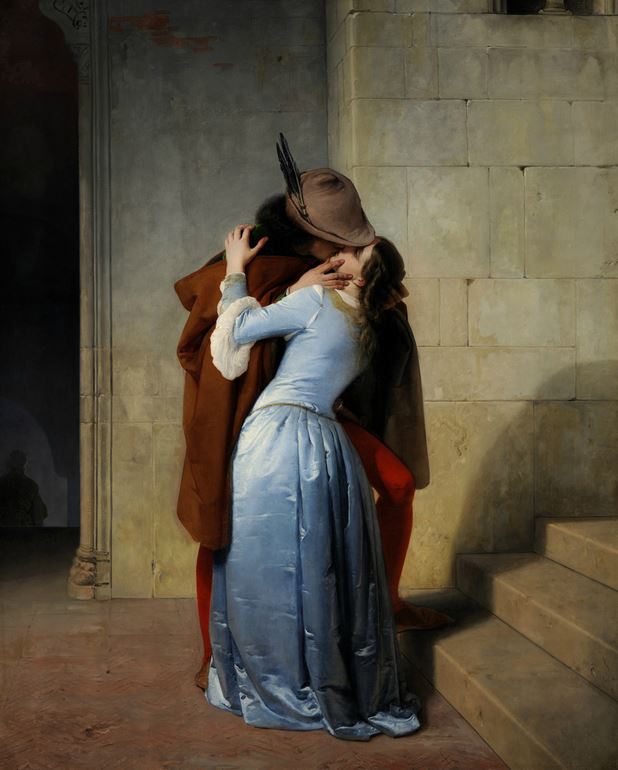
Francesco Hayez, a well-known Italian painter, created “The Kiss” in 1859.
His artwork depicts a passionate embrace between two lovers, who then kiss each other in what looks like an intimate moment that might be shared only between the two of them.
The artist captures a breathtaking degree of realism in each and every minute detail in the painting, from the couple’s hands entwined around one another to the woman’s blue dress that is flowing.
It is reported that Hayez spent a great deal of time studying Italian Renaissance art and architecture throughout his early career, which is reflected in the painting in a number of different ways.
The viewer is drawn to focus on the lovers because the light and shadows appear to create a balance that prominently features the two, and the steps on the right side of the canvas point downward to the couple. This draws the viewer’s attention to the lovers and encourages them to concentrate on them.
This picture has been the subject of extensive interpretations, and it is generally agreed upon that it is the most popular painting in the history of art that contains a romantic subject matter.
6. Portrait of a Man in Red Chalk – Leonardo da Vinci
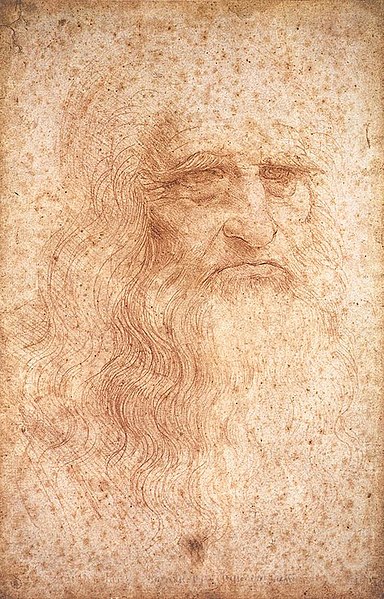
Artistically, Leonardo da Vinci is widely regarded as a human form master. The Vitruvian Man, one of Leonardo da Vinci’s many works of art, has been widely regarded as the most influential artistic representation of the human body.
There is, however, another red chalk painting that is also famous for its depiction of a man.
Many art experts and historians believe that Leonardo da Vinci painted the self-portrait known as Portrait of a Man in Red Chalk.
Red chalk, a favorite medium of da Vinci’s and other artists for preliminary sketches before painting or sculpture, was used to create the image on paper.
In 1512, when da Vinci would have been an old man, he supposedly finished this work.
The simple illustration depicts the face of an older man with the characteristic creases across his forehead and the telltale gap in his front teeth.
Iron salts formed on the paper over time, causing the reddish splotches, due to the paper being kept in a somewhat damp climate.
7. The Fourth Estate – Giuseppe Pellizza da Volpedo
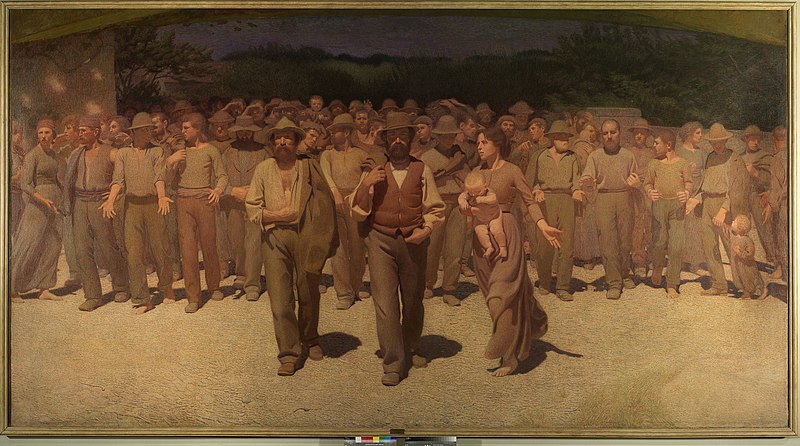
The Fourth Estate, by Italian artist Giuseppe Pellizza da Volpedo, was originally titled The Path of Workers and painted in oil between 1898 and 1901 under the earlier name.
It shows a representative of the workers striding calmly and confidently out of the mob during a labor strike to bargain for the rights of the workers.
Its name alludes to the fact that the working class is equal to the traditional estates of nobles, clergy, and commoners.
In order to test out his divisionist depictions of color, Pellizza created three different large-scale drafts of the piece.
Despite its initial rejection by mainstream art circles, after his death The Fourth Estate became a widely replicated symbol of Italian socialism.
Gradually, it gained prominence until it was considered a masterpiece among Italian paintings from the early 20th century. Currently, you may see the painting at Milan’s Galleria d’Arte Moderna.
8. Madonna of the Rose – Giulio Romano and Raphael
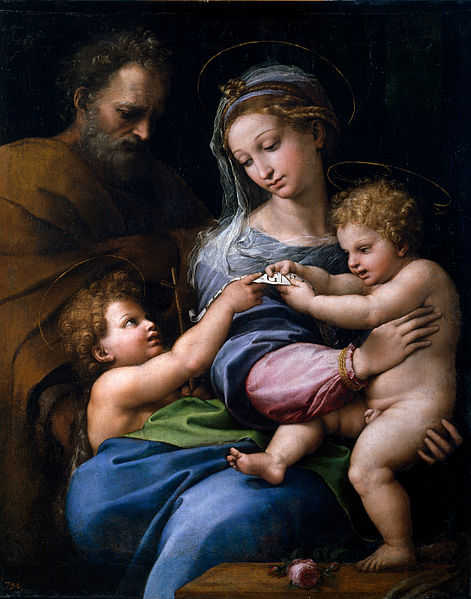
It was painted between 1518 and 1520 and is now housed in the Museo del Prado in Madrid under the name Madonna della rosa (Madonna of the Rose).
Raphael’s hand in this is questionable, and Giulio Romano’s contribution cannot be ruled out. An uncredited artist added the rose and the bottom half at a later time.
There is an additional autograph version of this artwork by the same artist made on wood panel, but without the rose and lower strip.
9. Transfiguration – Raphael
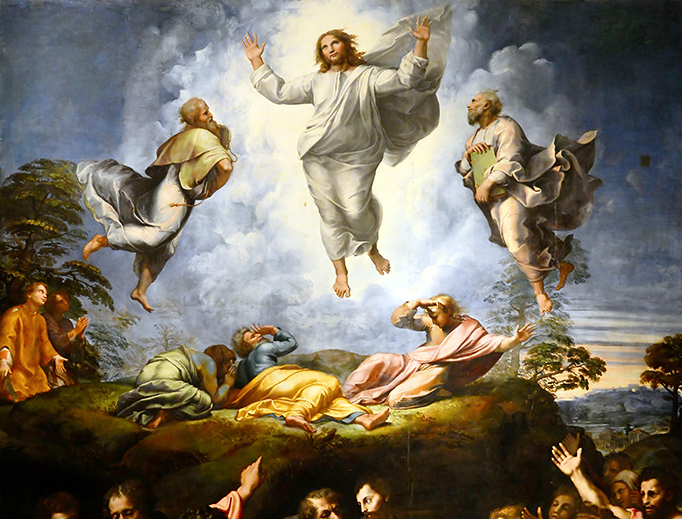
Raphael’s final painting, titled “The Transfiguration,” is a magnificent work that exemplifies the Italian High Renaissance. Raphael worked on an altarpiece for the French cathedral of Narbonne until the year 1520, the year he passed away.
The altarpiece was being created at the behest of Cardinal Giulio de Medici, who would later become Pope Clement VII (1523–1534).
This masterwork in the Renaissance style brilliantly conveys the primary concept of the painting, which is to demonstrate how the life and teachings of Christ impacted humankind.
This piece of artwork is aesthetically exciting and captivating thanks to the juxtaposition of warm and chilly tones throughout.
Because it was painted in the classic fresco technique, there is not a lot of depth or shade in The Transfiguration. This is because of the style. Raphael makes up for it with his vibrant depictions of individuals whose lives have been transformed by the message that Christ sent.
10. The Entombment of Christ – Caravaggio
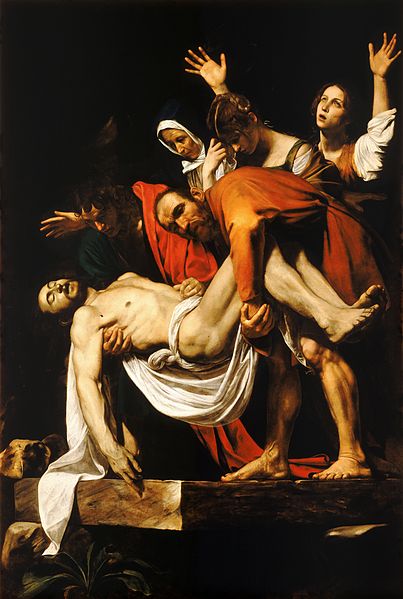
The painting titled “The Entombment of Christ” was completed by Caravaggio between the years 1603 and 1604 and was commissioned for the second chapel on the right side of Santa Maria in Vallicella. This church was constructed for the Oratory of Saint Philip Neri.
It is generally agreed upon that it is one of the most revered altarpieces that has ever been created.
While the original piece of artwork is preserved in the Vatican’s Pinacoteca, a copy of it can be found displayed in the chapel at the present time. Several other artists, like as Rubens, Fragonard, Géricault, and Cézanne, were also influenced by the piece and created their own versions of it.
In the year 1797, the picture was shipped to Paris so that it might be exhibited in the Musée Napoléon there. In the year 1816, the piece of art was relocated to Rome and afterwards shown in the Vatican.
11. Primavera – Sandro Botticelli
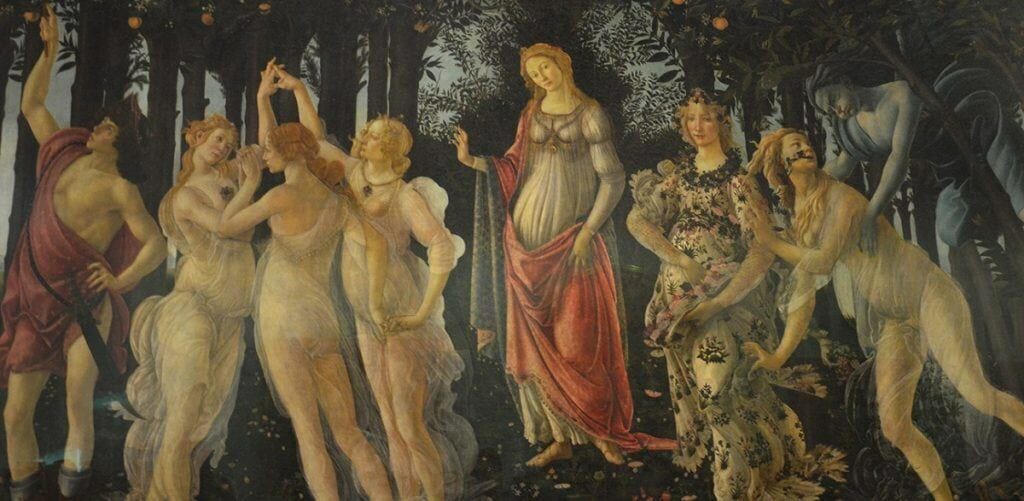
It is believed that Sandro Botticelli created the piece of art that is commonly known as “Allegory of Spring” in the year 1482 under the title Primavera, which translates to “Spring” in English. This is the year when the painting was hung in the Uffizi Gallery in Florence, Italy.
Also Read: Art in Florence
The name “Allegory of Spring” has become widely used to refer to this particular piece of artwork. This is the name that has been selected for the piece of artwork that has been created.
The question of whether or not the piece of artwork depicts the changing of the seasons or whether or not it is making reference to a mythical event has been the topic of much discussion among art historians and critics.
This piece of artwork is largely considered to be among the best examples of Renaissance painting. This is not simply because of its relevance; it is also widely considered to be among the best examples of Renaissance painting because of the aggressive use of color that Botticelli employed at the period. This is not only due to the fact that it is pertinent, but also because to the daring use of color that was used.
12. Pietà – Titian
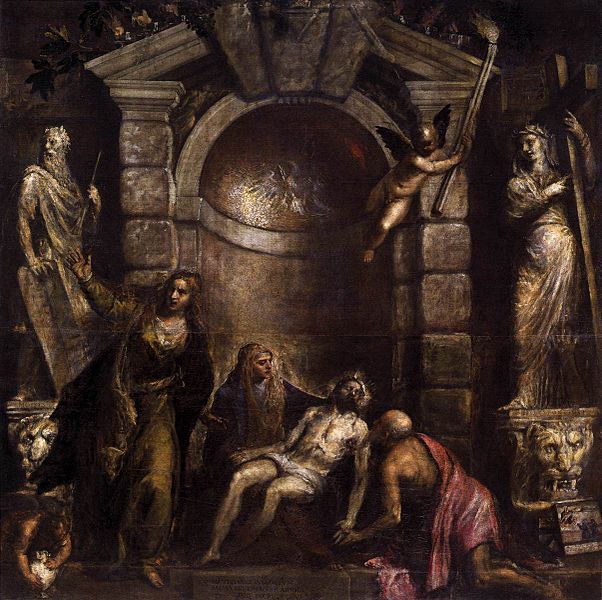
When Titian passed away in 1576, he left one of his final works, the Pietà, unfinished; Palma Giovane was the one who finished it and it is now housed in the Gallerie dell’Accademia in Venice.
Titian’s initial plan was for the painting to be hung over his tomb; however, it had to be painted in two stages in order for it to be presented in two different churches.
Titian was working on dozens of works at the time of his death, and this particular piece was one of them.
According to an inscription that can be found at the bottom of the picture, Palma Giovane finished it, making only minor adjustments while attempting to mimic the manner of Titian’s painting.
13. Portrait of Innocent X – Diego Velázquez
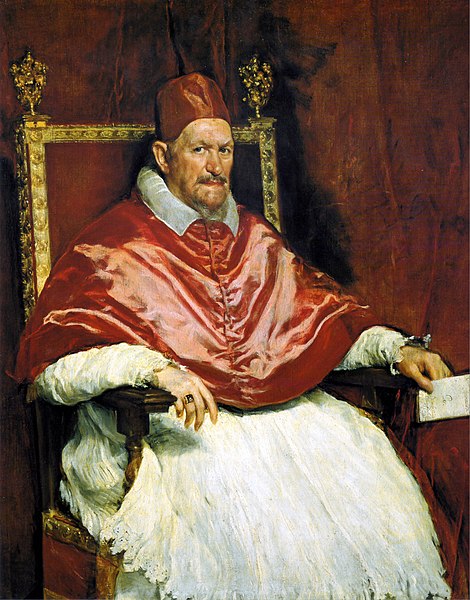
The Spanish painter Diego Velázquez created the oil on canvas portrait of Pope Innocent X in the year 1650 when he was on a journey to Italy. The medium of the portrait is oil on canvas. The majority of artists and art critics agree that it is the best portrait that has ever been made.
The Galleria Doria Pamphilj in Rome is where it is kept for public viewing. A more compact version of it can be found in the collection of the Metropolitan Museum of Art in New York, and a study of it can be seen at Apsley House in London.
The artwork is renowned for its realism and for being an unvarnished portrait of a very intellectual, astute, and wizened old man. He is decked out in linen vestments, and the quality of the work is clear to see in the deep reds of his upper clothes, head-dress, and the curtains that are hanging.
After being shown reproductions of portraits by Velázquez, Pope Giovanni Battista Pamphilj, who was born Giovanni Battista Pamphilj, eventually changed his mind about posing for the artist and agreed to do so.
The fact that the painter had already depicted a number of members of Pamphilj’s inner court was one of the contributing factors that led to this significant advancement in the painter’s career.
The Pope, on the other hand, maintained a prudent attitude, and as a result, the picture was initially seen to no one save his personal family. It remained mostly hidden from the general public during the 17th and 18th centuries.

